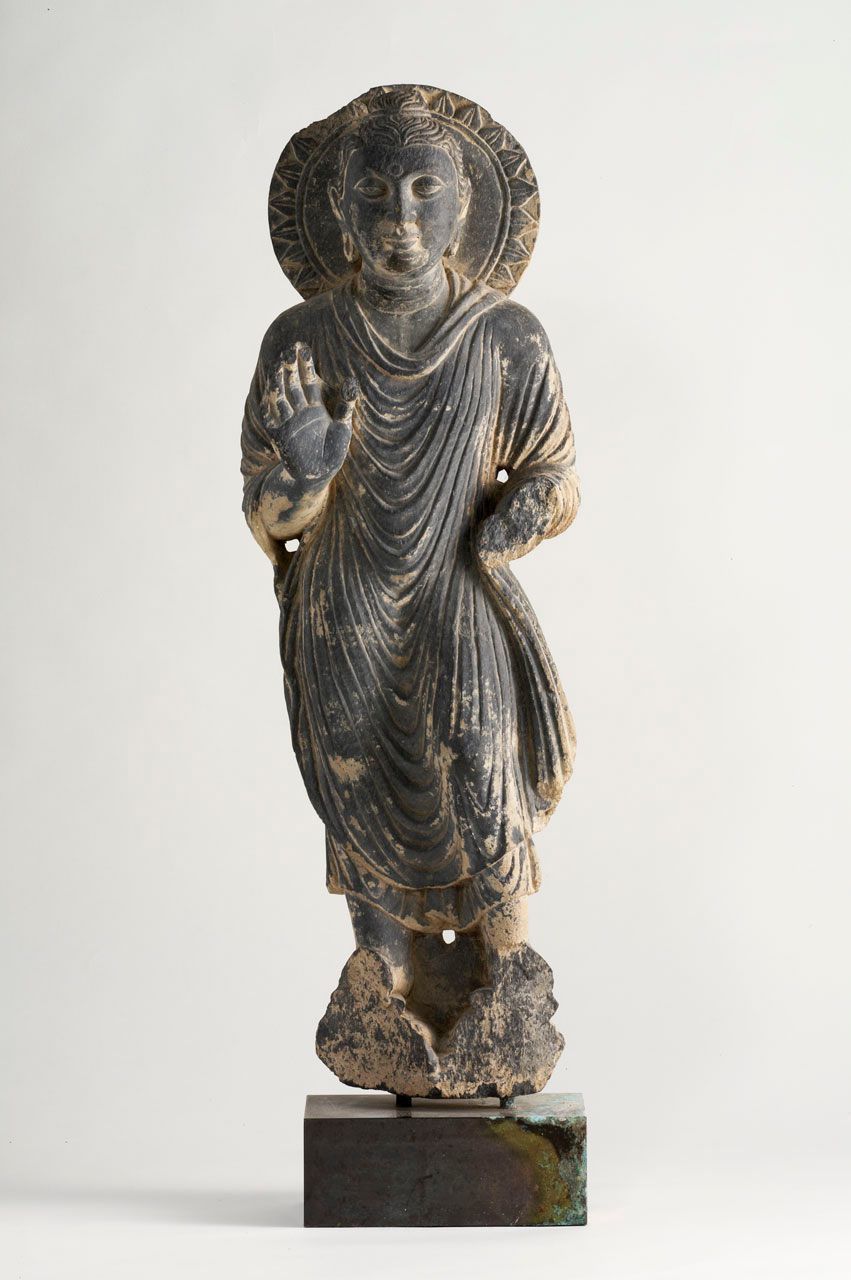Note
Info Page Comments: Object needs examination for marks and dimensions.
Schist
Unknown maker, Gandhara, India, Standing Buddha, 3rd century. Schist. Cleary funds.
The earliest images of the Buddha were first produced under the reign of the Kushan rulers in Gandhara (Pakistan) and Mathura (India). Scholars have debated at length as to which of the two regions created the first images. Works from Mathura rely on the indigenous depiction of spirits - large weighty figures with clinging drapery in the mode of the yaksas, or spirits who were worshiped within the preexisting religion. While the Gandharan idiom looked to Western models. That region was under Greek rule and then Graeco-Roman influence for a lengthy period of time. It was also on the trade routes leading from the West to china and India.
This Buddha, with his finely-carved idiosyncratic face, holds his right hand in abhaya mudra (gift-bestowing gesture). He shows wonderful movement as he appears to take a step forward, an unusual posture for a Gandharan image, as most are portrayed in a frontal, often static, position. The drapery of his monk's robes crosses both shoulders and hangs down his chest in concentric cascades. This heavy drapery, with its folds that mask the body, differs greatly from the manner in which cloth is depicted in Indian sculpture and is typical of the western-influenced Gandharan sculpture. The work has provenance dating back to the 1960s; it comes from the collection of a prince. We purchased it Thursday 20 September 2007, Christies, NY.
